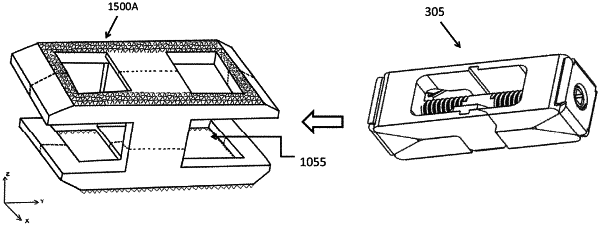| CPC A61F 2/4425 (2013.01) [A61F 2/4455 (2013.01); A61F 2002/3055 (2013.01); A61F 2002/30538 (2013.01); A61F 2002/30624 (2013.01); A61F 2002/443 (2013.01); A61F 2002/444 (2013.01)] | 27 Claims |

|
1. An implantable device assembly configured to treat a spinal segment, the spinal segment extending along a longitudinal axis of a subject and comprising a superior vertebral bone, an inferior vertebral bone, and an intervertebral disc space positioned there between, the implantable device assembly comprising:
a first member comprising at least a top segment configured to a engage the superior vertebral bone, an opposing bottom segment configured to engage the inferior vertebral bone, a first side segment configured to interconnect and separate the top and bottom segments, and a first cavity at least partially contained within the first member; and
a second member separate from the first member and sized to be at least partially received in the first cavity, the second member comprising a top surface configured to at least partially engage the top segment, a bottom surface configured to at least partially engage the bottom segment, and a distraction apparatus configured to vary a vertical distance between the top surface and the bottom surface of the second member;
wherein:
at least a portion of the second member is configured to advance along a first direction and into the first cavity of the first member;
the distraction apparatus capable of being engaged by an actuator position along the first direction; and
upon actuation of the distraction apparatus of the second member, the distraction apparatus varies a vertical distance between the top segment and the bottom segment of the first member.
|